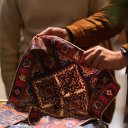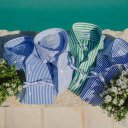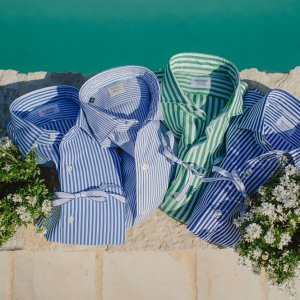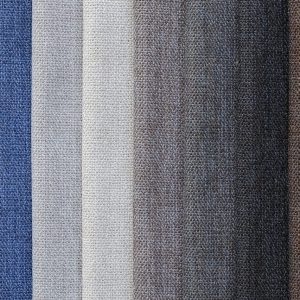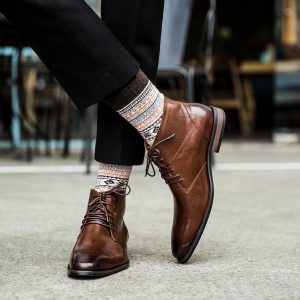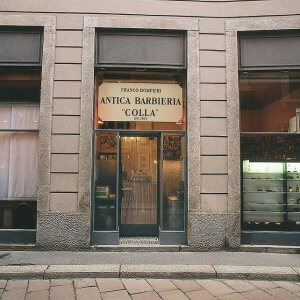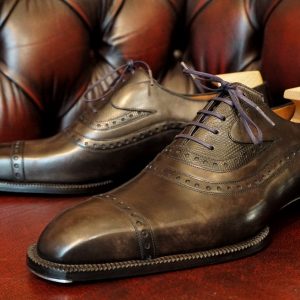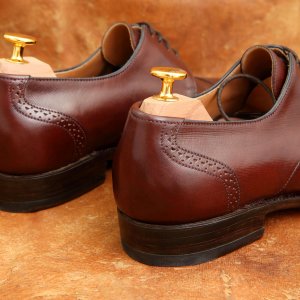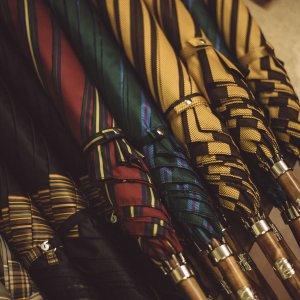Derby shoes are comfortable, elegant and versatile. At least this is how most men in Europe see the classic Derby shoes nowadays. There is a completely independent shoe concept which defines the Derby men’s shoe. With its special cut it complements the world of menswear, style, and fashion. Gents who are familiar with this world, appreciate the merits of those shoes. They can choose between a vast range of different models and types. The Derby serves as the basis for various other shoe models, which might be a little bit irritating at first. Therefore, we want to have a closer look at the differences and peculiarities of a Derby shoe. Above all, you will see that it has developed into something more than just a casual shoe in recent times.
From the county of Derby to the modern classic
It is not exactly clear as to how or why the Derby came to exist. Probably there is a potential connection to the Earl from England who is known by the same name. Legend has it that it was exactly this Earl who always had a problem putting on shoes. Especially the “entry” into the shoe was a challenge for him. Thus, at the end of the 19th century, a shoemaker helped to develop shoes with an easy “access”. In this case, quarters of leather with the shoelace eyelets are sewn on top of the shoe vamp. Since then, it is exactly this construct which is known as the Derby cut. Nowadays, however, all shoes with an open lacing and thus an easy entry are wrongly called “shoes with a Derby cut”. They do not necessarily have to do anything with the original Derby.
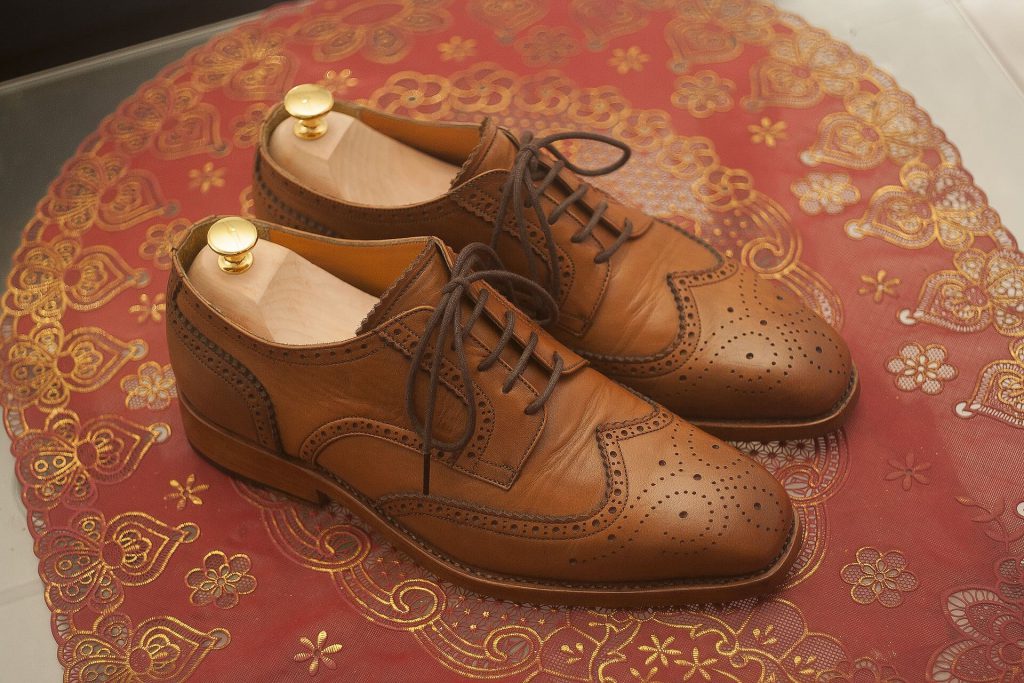
Probably the most versatile men’s shoe
A classic and genuine Derby has between 3 and 5 eyelets. Consequently, it can be easily put on and taken off. If we compare this shoe type with an Oxford, you can directly recognize the difference. The Oxford has a closed lacing and hence makes the impression of a more elegant and conservative shoe. In contrast, the Derby’s open lacing for a facilitated access into the shoe makes it appear more casual. Many people do not know that originally the Derby was and still is a more casual shoe. This is not surprising especially when you consider the broguing and medallions which you can often find on the shoes (this however is valid for Oxfords too).
Typical of the Derby is its open lacing.
In general, you can remember that plain shoes without any decorative perforations will always be considered more formal. The more perforations and serration you have on the leather, the more it will give the shoe a sporty and extravagant look. Apart from the possible brogues on the Derbys, you can buy them in various colors. You can even let an expert do some patina work on the leather. Of course, the latter is a matter of taste and not always appropriate for every occasion. However, this can make Derby shoes for men even more appealing.
As already mentioned, the Derby is also available in an undecorated and inconspicuous, plain version. Hence, it can be worn in combination with a suit. These plain Derby suit shoes are pretty classical and stylish. Certainly, they can complement a refined gentleman’s attire. However, for special events and extremely important meetings, a Derby could possibly be considered a bit too casual. In which case the more formal and elegant Oxford is clearly a better choice.
The Budapester Derby Men’s Shoe
No, it is not totally clear if the Derby Budapester comes from Budapest, the capital of Hungary or not. After all, in Hungary this “Budapester” is called the “Carlsbader”, which only adds to the confusion. You can recognize the Budapester based on its patched heel caps and its pretty high heels. Also, its shape makes the impression of being rather chunky. This however takes away from its elegance. As a result, it is difficult to wear Budapester shoes in combination with a suit without making the whole look somehow heavy. Therefore, it is not suitable for slim men but could be rather a nice shoe for more corpulent, tall men.
If you really want to buy a Budapester, then you can use it as a chic casual shoe combining it with rather wide pants. This will form a straight line with the heel. Otherwise the proportions will look uneasy and the shoe will appear too bold.
The Derby Blucher Men’s Shoe
There is another shoe model belonging to the “Derby family” – the Blucher. Its origin goes back to a Prussian general (General Gebhard Leberecht von Blücher) who ordered the Blucher for his soldiers. After the battles of 1815, this form of footwear was later adopted in all of Europe, where it became a popular sports shoe in mid 19th century. By the turn of the century, the Blucher even won acceptance over more formal events.
The Blucher belongs to the shoes with an open lacing. The term “Blucher” is sometimes interchangeably used with “Derby”. However, the main difference is, that not whole quarters of shoelace eyelets but just tabs of eyelets (they are a bit similar to the shape of a hockey stick) are sewn on top of the vamp. Just like any other Derby model, the Blucher is also available with various brogueings (e.g. full brogueing or semi brogueing). Nevertheless, also in this case the following principle applies: The more formal and elegant the occasion, the simpler the shoe should be (plain vs. brogues)!
Properties of a Derby
Typical of the derby is the last with its rather elegant, gentle, and careful curves (basically the form of the shoe). Due to its open lacing and its rather wider width in the bale area, the shoe guarantees a good fit. A high-quality Derby is made of fine calf leather, usually with a medium degree of softness. This makes the shoe incredibly supple and delicate. At the same time, the high proportion of leather ensures a perfect air circulation in the shoe itself and allows the feet to stay dry.
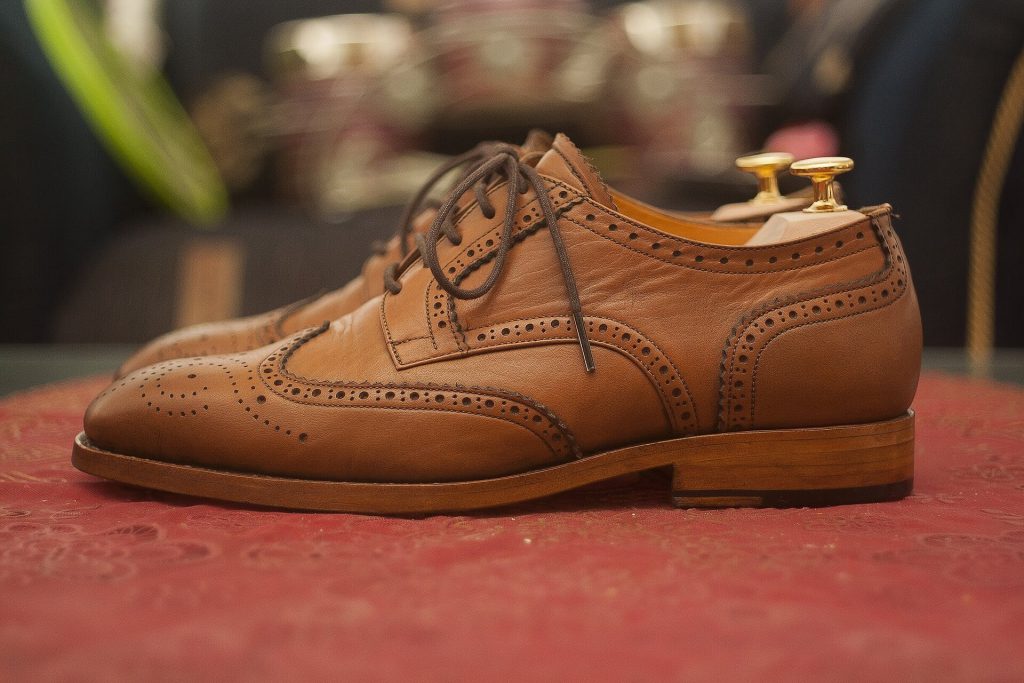
High-quality Derby men’s shoes are generally very durable and their shape will stay stable. This is due to the complex manufacturing process during which the Derbys are made by hand. The whole production of high-quality shoes is pretty fascinating as it takes a lot of time and effort to go through every single step of shoemaking. Depending on the shoe type, there might be around 150 individual steps in the process. Now that is amazing!
Derby vs. Oxford?
By now it should be pretty obvious that one shouldn’t put a Derby on par with an Oxford. Of course, elegant Derbys are spotted right next to Oxfords standing on shelves. This offers today’s well-dressed men a broad choice of chic shoes. However, their use is not really comparable. A Derby is more casual and less elegant and can be beautifully paired with some smart pants or even jeans.
The Plain Derby can be beautifully paired with a suit for more formal occasions.
For gentlemen who have a rather wide front foot, the Derby seems to be the perfect model. The shoe leaves enough space and ensures comfortable walking. If you are unsure which Derby to buy, go for the “Plain Derby”. It is one of the most popular Derby models. The Plain Derby is smooth, does not have any perforations and can be therefore worn in more casual but also formal situations. Nowadays this type of shoe is definitely more than just casual footwear. If you have a look at Derby shoes created by shoemakers who are making very high-quality shoes, those can look incredibly gorgeous and elegant. It is therefore pretty much considered an all-rounder.





